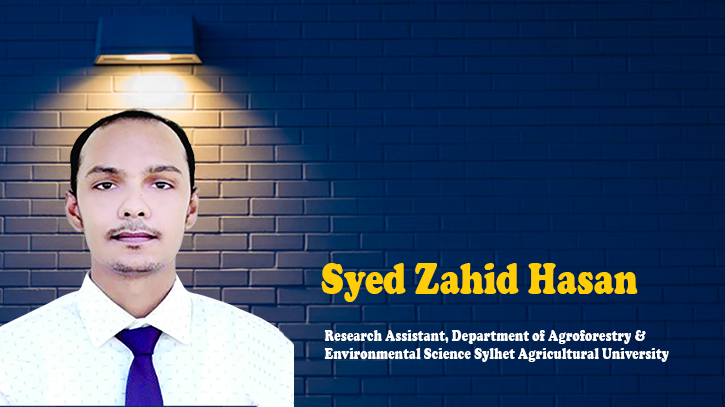
Photo : Messenger
There is no alternative to using fertilisers to increase crop production. From the era of cow dung to the era of chemical fertilisers, there has been a radical change in crop production. It is essential to use modern agro-technology to ensure higher yield with lower input. However, food demand has increased up to 2–3 times in the last decade. Studies have shown that 60–70 percent of the fertiliser used by farmers is wasted, harming the environment by mixing with surrounding water bodies or other elements instead of increasing soil fertility. In this regard, the use of nanotechnology in agriculture may ensure economic, environmental and public health safety.
Why nanotechnology in Urea?
Recent studies say that nanotechnology is environmentally safe and nutrients are released in a controlled manner into the plant's absorptive parts, which act like nano-sensors when applied on the leaves during the growth phase. Minimising wastage provides the right amount of nutrients at the right time. Nutrients required by the crop are polymerized, resulting in increased durability and nutrients enter the plant through the leaf cuticle. According to the researcher, more than 60 percent of chemical fertilisers and 98 percent of pesticides are wasted in various ways, which spreads out directly to water bodies and the environment. In this case, nanotechnology-based urea fertiliser can change the scenario.
By 2035, demand will be 4 million ton
Agricultural researchers estimate that by the year 2035, the demand for urea fertiliser in the country will be around 4 million tons. Domestic production is not likely to increase by much in the face of gas shortages and rising demand. Considering 45 percent of domestic production, about 55 percent will have to be imported. As this will increase the pressure on the government, anxiety may also arise among the farmers and production may be interrupted.
Neighbouring country India has progressed well in this regard. They are moving towards the nanotechnology-based urea fertilizer. According to "Indian Farmers Fertiliser Cooperation Limited (IFFCO)," a 500-ml bottle of nanourea is equivalent to a 50 kg bag of urea fertilizer. They have conducted trials on 94 crops in about 11,000 locations in India. It contains 4 percent nitrogen and its Nitrogen Use Efficiency (NUE) is up to 90 percent with suitable application methods. Apart from IFFCO, several other Indian companies are working on nano-urea technology. However, in research and field observation, they gained popularity.
Can save on subsidies?
Urea is the most widely used fertiliser in the country. The government subsidises huge money every year for the production, import and supply of urea fertilizer. According to the Ministry of Agriculture, the price of urea fertiliser per kg is only Tk 27 to the farmer's level, but if imported at the rate of Tk 48, the government spends an additional Tk 21. In FY 2022–23, the target for urea fertiliser is about 26 lakh tons. According to the target, if the farmer buys 1 bag of urea for 1350 Tk, the government will spend about 1050 Tk. more. On the other hand, about 10 lakh tonnes of urea are produced domestically, but another 16 lakh metric tonnes of urea are needed, which is about 60 percent of the total target.
However, according to some concerned companies, it has been calculated that the price of one bottle of nano urea may be the same as 1 bag of urea. They expect to lower the cost by producing it domestically. As a result, the government may save about 168 crore takas.
1 bottle is equivalent to 1 bag
Generally, a 50 kg urea bag contains 46% of nitrogen whereas the total amount of nitrogen is (50x0.46) 23 kg. According to the research, plants can uptake 30-35% of nitrogen. So, the total nitrogen uptake by plants is (23x0.30) 7.5 kg from conventional urea.
On the other hand, the average size of urea aggregate is 10,000 nm for granular urea and the average size of nano urea aggregate is only 25 nm. So, single granular urea aggregate is equivalent to (10,000/25) 420 nano urea aggregate.
According to the calculation, a 500-ml bottle has (0.2x90) 18 grams of nitrogen under 90% use efficiency. So, the nitrogen use efficiency is equivalent to (420x18.0) 7500 grams or 7.5 kg for nano urea which is equivalent to a 50 kg conventional urea bag.
Can reduce carbon emissions by up to 50%
According to the research in 2020, the GHG emissions in the synthesis stage are larger, with an average of 2.68 t eq.CO2/t urea accounts for 81.3% of the life cycle of GHG emissions and the average life cycle of energy consumption (LcEC) is about 30.1 GJ/t urea, where the CO2 equivalent emission is 2.41 t eq. CO2/t urea. Using nano urea, 50% of conventional urea may be replaced and it can reduce GHG emissions by about 50%.
How Nano Urea works
Nano-urea has 10,000 times more surface area and number of particles per unit area than conventional urea. Nanoparticles can easily penetrate through the cell wall or leaf stomatal pores and be transported to other plant parts via phloem cells and plasmodesmata, or they can bind to carrier proteins through aquaporin, ion channels, and endocytosis. Upon penetration, these nanoparticles reach plant parts where nitrogen is required and release nutrients in a controlled manner, thereby reducing wastage in the environment. LNU in plants enhances metabolic processes and promotes meristematic activities, leading to higher apical growth and leaf photosynthetic area.
Also, there are barriers
Although there is a huge potential in the agriculture sector, there are major hurdles in the commercial import of liquid nano urea in the country. Around 2012, there was a heated debate about liquid urea in the country. However, since technology like nano was not invented then, the method harmed the yield. Consequently, on April 20, 2013, the National Fertiliser Standardization Committee (NFSC) decided to ban the import of all types of liquid fertilizers. Later, as per the decision of the National Fertiliser Standardisation Committee meeting on March 9, 2014, as per the decision of the sub-committee, banning the import of liquid fertilisers and allowing production is contrary to the GATT agreement, it was opined that there is no need for liquid fertiliser production, sale and distribution policy in the country.
Research on Nano Urea in Bangladesh
Research has been done on LNU in the country as well. A research paper published by the International Rice Research Institute (IRRI) in 2023 showed that applying liquid nanourea in two splits at 4 ml per liter of water after the application of 50% urea fertiliser before the emergence of rice seedlings gave a higher yield than the conventional method. As a result, production will increase and cost will be reduced at the same time. The study is an initiative of eight international research organizations including CGIAR, IIDA, ICARDA, ILRI, IRRI, CIMMYT, IWMI and Alliance Biodiversity & CIAT.
Another study conducted on mung bean at Bangladesh Institute of Nuclear Agriculture (BINA) in 2023 showed that, by the application of nano urea plant height, primary branches, number of pods, number of seeds per pod and yield in weight significantly increased. A research paper on this has been published in the Agroforestry and Environment Journal.
Potentiality of LNU
The use of LNU will ensure the environment is safe as well as increase production and reduce cost. Researchers got 8-20 percent increase in production after applying it. However, there is a lack of legislation and policy on the use of nanoparticles in agriculture. Besides, as there is no plan to import liquid fertiliser from the government level, it is not possible to say whether nano-urea technology will see the light of hope in Bangladesh. However, implementation of smart agriculture is not possible if the modern technology of agriculture is not welcomed. However, if it is possible to apply this technology in the country to reduce the excess use of urea fertilizer, there may be a revolutionary change in the agricultural economy and food security. Failure to introduce a urea-saving technology might threaten the urea economy and food security in Bangladesh.
The writer is a Research Assistant, Department of Agroforestry and Environmental Science Sylhet Agricultural University. He can be reached at: [email protected].
Messenger/Fameema








